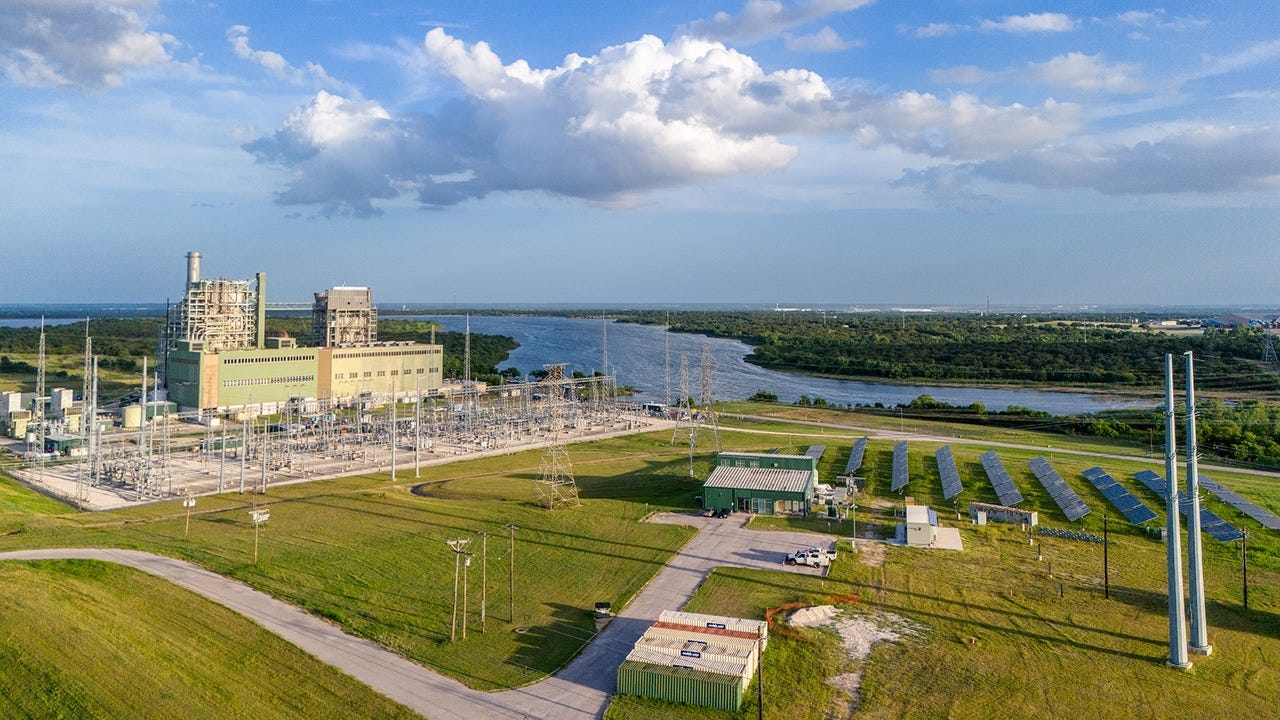Real-Case examples of Battery Energy Storage Systems in Grid Forming Mode
GridStab News: Regular posts to demystify power system dynamics and stability
1. Hornsdale Power Reserve, Australia
The Hornsdale Power Reserve, also known as the "Tesla Big Battery," is one of the most prominent examples of a Battery Energy Storage System (BESS) operating in Grid Forming mode (see this article that give more details about Grid-Forming control). Located in South Australia, this facility has a capacity of 150 MW/193.5 MWh and plays a crucial role in stabilizing the grid by providing frequency regulation and supporting renewable energy integration [1].
The system has demonstrated its ability to respond rapidly to grid disturbances, helping to prevent blackouts and reduce reliance on fossil fuel-based Peaker plants [1].
2. Decker Creek Power Station, Texas
In Texas, the Decker Creek Power Station has integrated a BESS (capacity 200 MW) to enhance grid stability and resilience. This system, equipped with grid-forming inverters, helps manage the intermittency of renewable energy sources like wind and solar. During recent heatwaves, the BESS played a vital role in maintaining grid reliability by storing excess energy and releasing it during peak demand periods [2].
Technological Challenges
1. Intermittency and Grid Stability
One of the primary challenges of integrating BESS in Grid Forming mode is managing the intermittency of renewable energy sources. Unlike conventional generators, renewable sources like wind and solar are variable and unpredictable. BESS must be capable of providing fast frequency response to compensate for power imbalance on the grid as well as voltage support to maintain grid stability [2].
2. Battery Lifespan and Degradation
The relatively short lifespan of batteries and their degradation over time pose significant challenges. Frequent cycling and high discharge rates can accelerate battery wear, reducing their efficiency and increasing maintenance costs [3]. Developing advanced battery chemistries and management systems is essential to address these issues.
There have been several exciting advancements in Battery Energy Storage Systems (BESS) technology recently. Here are some of the key developments [4]:
Solid-State Batteries: These batteries replace the liquid electrolyte found in traditional lithium-ion batteries with a solid one, making them safer, more efficient, and capable of holding more energy. Although still in the research phase, solid-state batteries are expected to significantly enhance BESS performance in the coming years.
Flow Batteries: Flow batteries, such as vanadium redox flow batteries, store energy in liquid electrolytes that flow through a system. They offer the potential for large-scale energy storage with a longer lifespan and faster discharge rates than lithium-ion batteries.
Sodium-Ion Batteries: These batteries use more abundant materials, making them a cost-effective solution for large-scale energy storage. While their energy density is lower, advances in sodium-ion technology could make them a major player in the future of BESS.
3. Safety Concerns
Safety risks, such as thermal runaway and fire hazards, are critical concerns for large-scale BESS installations. Ensuring robust safety protocols and advanced monitoring systems is crucial to mitigate these risks [3].
Advantages of Grid Forming BESS for the Electrical Grid
1. Enhanced Grid Reliability
BESS in Grid Forming mode can significantly enhance grid reliability by providing fast-acting frequency and voltage support which compensates the lack of conventional synchronous generators. This capability is particularly valuable during grid disturbances, helping to prevent blackouts and maintain a stable power supply [2].
This makes Grid Forming BESS one of the key assets to tackle weak system challenges (see more details about the concept of system strength in this article).
2. Increased Renewable Energy Integration
By smoothing out the supply-demand balance, BESS enables the grid to accommodate a higher proportion of renewable energy without compromising stability or reliability [5]. This integration is vital for reducing greenhouse gas emissions and transitioning to a sustainable energy future.
3. Cost Savings and Efficiency
BESS can reduce energy costs through peak shaving and load shifting. By storing energy during periods of low demand and releasing it during peak times, BESS helps lower electricity prices and reduce the need for expensive infrastructure upgrades [4]. Additionally, BESS can defer investments in new generation capacity and transmission lines [1].
These real-case examples and insights into the technological challenges and advantages of BESS in Grid Forming mode highlight their critical role in the ongoing energy transition. By addressing these challenges and leveraging the benefits, BESS can pave the way for a more resilient, reliable, and sustainable electrical grid.





